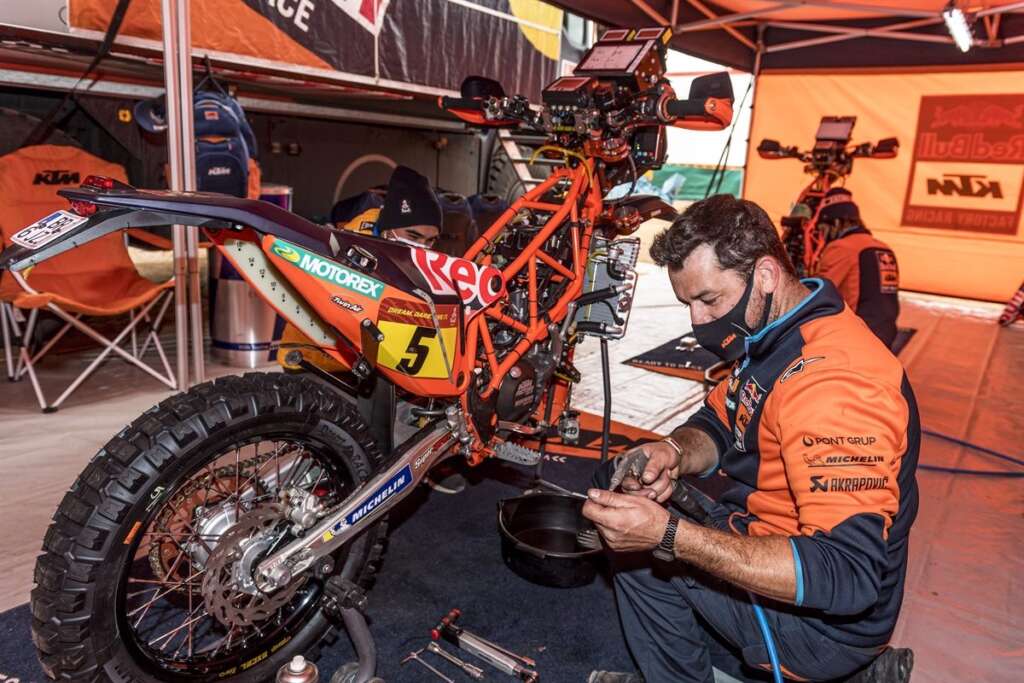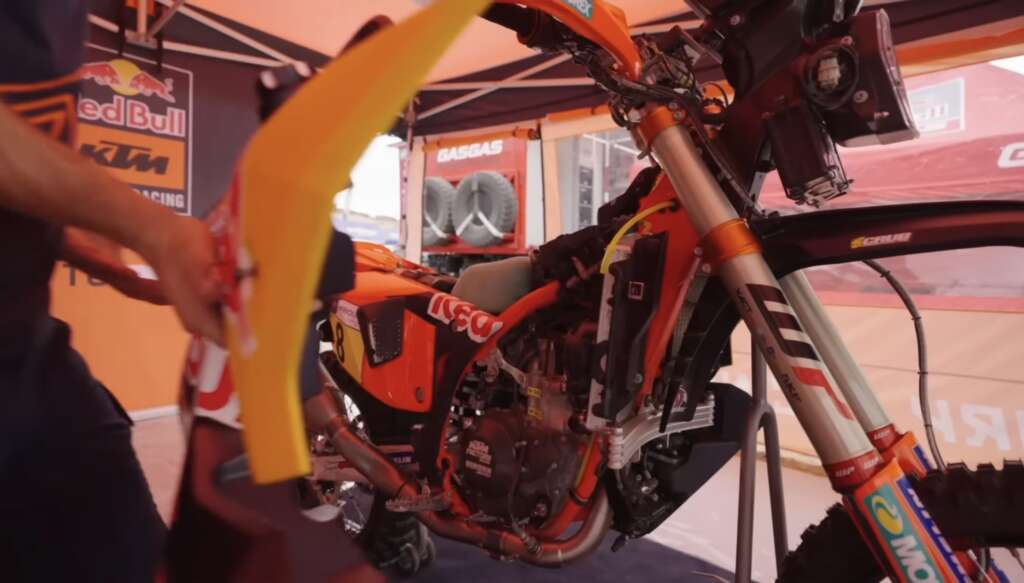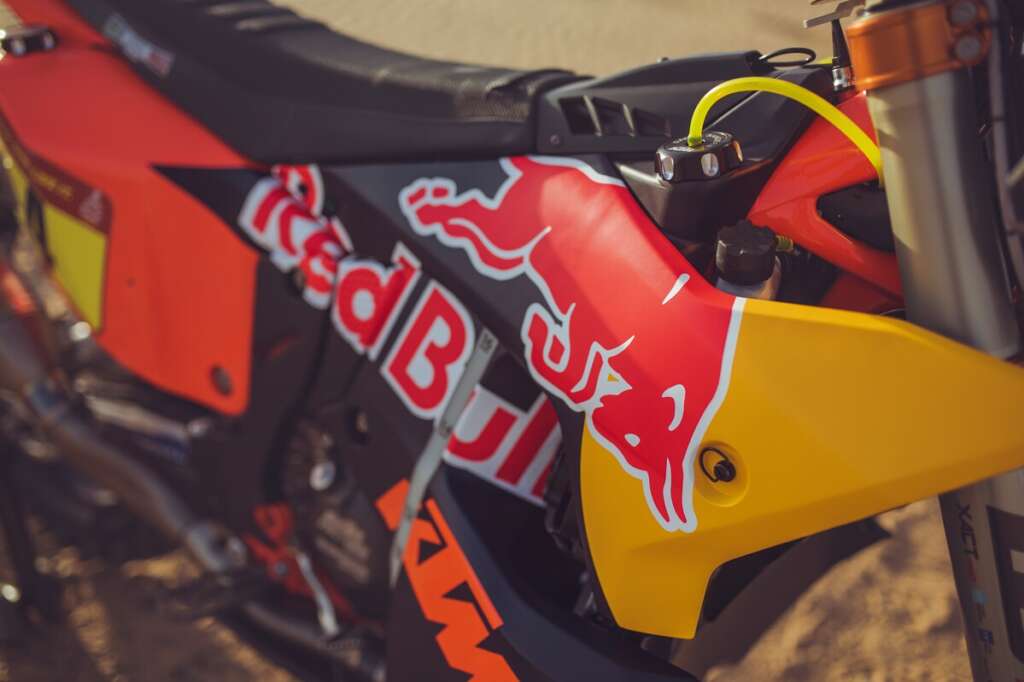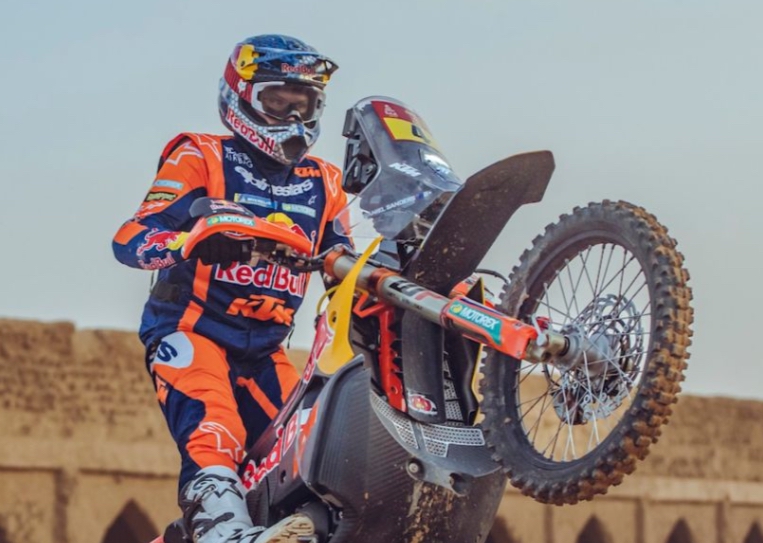I have worked with Antonio Januario on many production tests as his engineering mind is something that I love to pick at times. We were talking after a test one day and he mentioned some of KTM’s rally bikes have a unique frame. Soon thereafter he sent me this article and I thought it would be a good piece to stick up here on the website to get you all talking. Is something new coming down the pipe for us moto geeks from KTM? Who knows, but below are a few thoughts from Antonio on what he sees from KTM. -KK
Written By: Antonio Januário
KTM has always been one of the most exciting motorcycle manufacturers, constantly introducing updates on their bikes at a much higher rate than their Japanese competitors. Lately, it seems like they have been on a journey to improve their frame design, having introduced two new frames since late 2021. Pretty unusual, as developing a motorcycle frame tends to be a big endeavor, taking between three to four years of work and often involving changes to other components. So, what has KTM been looking for?
These frame changes are likely driven by a combination of factors: meeting market demands, as customers expect significant updates to keep their bikes competitive and relevant, and satisfying the requirements of high-profile professional riders. In the world of motocross, where racing is the biggest platform to promote the brand, factory KTM America and the MXGP team will have a considerable influence over future model performance requirements.
Surely, KTM’s frame development will persist. Not only do riders continue to express that there is room for improvement to the current design, but also the brand hasn’t been topping the magazine shootouts for the past few years.
In a recent Vital MX interview with Jorge Prado, he was asked about the difference between his current Kawasaki race bike and his previous GasGas. Prado highlighted, regarding his Kawasaki: “[…] downhills, I have made a lot of passes going down, a lot, I was just going wide open downhill and the bike was not moving, so I think that is very nice […]”. This feeling, known as “stability” in testing terms, refers to the bike’s ability to not move side-to-side when going over fast sections of the track (on throttle), allowing the rider to confidently maintain a straight line at high speeds.
Interestingly, stability was a much-discussed topic over 20 years ago, when some of the Japanese brands started transitioning from a backbone style frame to a perimeter style frame. The feedback at the time was improved high-speed stability and better front end bump comfort. Soon after, all Japanese brands followed.
KTM seems to be a firm believer of the backbone style frame geometry. While every single Japanese manufacturer moved to an aluminium perimeter frame, KTM didn’t. This begs the question: when are we going to see a perimeter KTM frame on their motocross models?
Considering the demanding world of two wheel off-road racing, beyond Motocross, fewer disciplines are faster and/or bumpier than rally racing – just think of the Dakar rally. From 2022 to 2024, KTM group moved away from their traditional rally frame – a steel trellis perimeter frame (see image) – and opted for a frame similar to their motocross models (see image 2). The concept was clever, as it allowed them to have the large fuel tanks closer to the centre of the bike, when compared to perimeter frames.


However, 2024 marked a shocking first for the KTM group: for the first time in 23 years – yes, you read that right – they didn’t have a bike on the Dakar podium. This was a monumental upset for the brand considering that they have managed to achieve a total of 20 wins over this period. Clearly, changes were required to be back at the top in 2025 and they actually delivered it – Daniel Sanders won the Dakar 2025 with KTM. What was different on the bike? The frame!
While clear images of the complete frame are not available yet, it is possible to see a KTM version of a perimeter frame with two beams connected laterally to the headstock (see image 3 and 4). It is distinctly different from previous and current perimeter frames from other brands, which makes it exciting for the industry. It makes us wonder about the full design and the disruptive direction KTM has taken.


On a final note, it is great to see KTM experimenting with different frame geometries, while it also begs the question: will KTM try this style of perimeter frame on their motocross bikes? And when might we see MXGP KTM riders on a similar setup? The future of KTM’s frame design is certainly one to watch!
